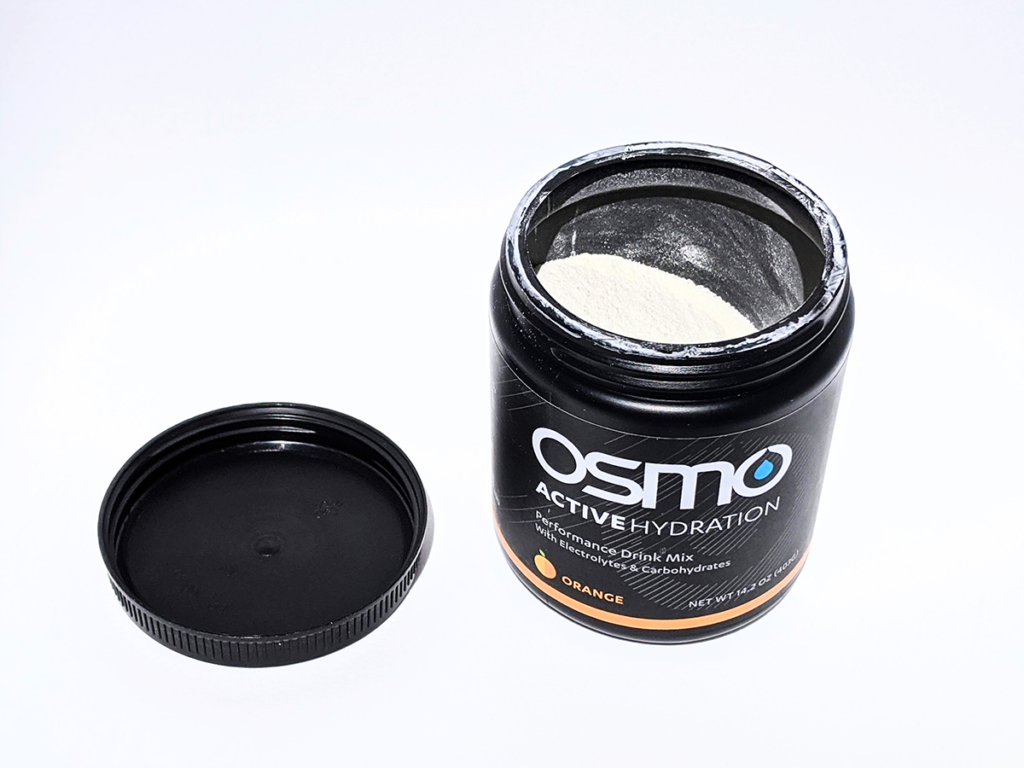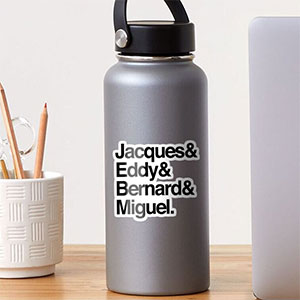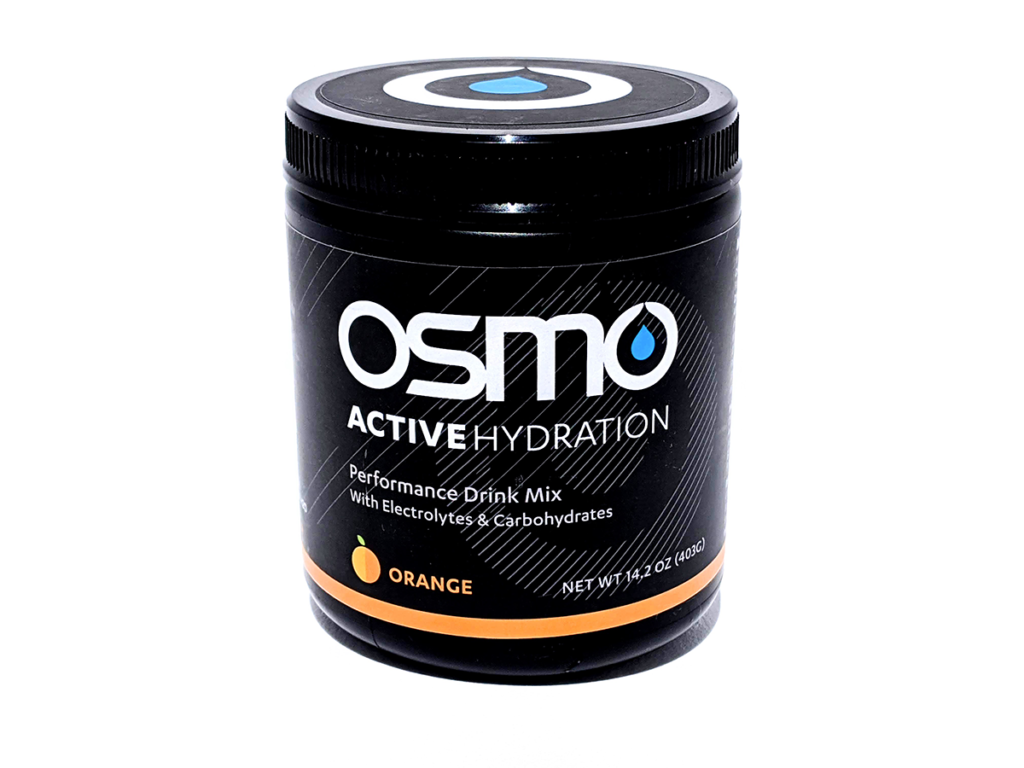Osmo have sent us a tub of their Active Hydration for assessment. We say “assessment” rather than “review” because this is a pioneering scientific product and… and we used to skip science class to watch the Giro d’Italia.

Osmo Active Hydration comes in a neat tub that looks great in your bike room. Osmo sent us the Orange flavor, but it also comes in Blackberry and Lemon Lime flavors. In terms of flavor, it’s not exactly Kia Ora, but there’s a subtle hint of orange that makes your bottle taste more interesting than plain water, and that presumably masks all the flavors from the sciencey stuff that’s going on behind the scenes.

And the sciencey stuff is important because that’s what makes Osmo stand out from the crowd of rival powders that may or may not give you diarrhea. The company takes its name from a term called osmolality, describing the percentage of a substance within water – getting this right is vital for efficient intestinal absorption. And, yes, it’s also vital for not giving you diarrhea.
In sports drinks, osmolality is determined by the carbohydrates, amino acids, and proteins when they’re diluted in your bidon. To optimize intestinal fluid exchange, you make the concentration of the drink lower than that of your bloodstream. That’s Osmo’s big selling point. Here’s a cute drawing of how it works:

Osmo says its differentiator is its 3.2% solution–3.2 grams of carbohydrates per 100ml solution–with maximized efficiency due to its unique ratio of glucose to sucrose. Other drinks cause the intestines to use body water to dilute the solution. It’s slower, less efficient, and leaves you less hydrated.

Does it work? Well. We don’t own a microscope, and our blood is so thick with Doritos and IPA that maple syrup probably has a lower osmolality than it. Anecdotally, on hot days in these early summer months, it’s rapidly become our favorite. Used in conjunction with sensible hydration practices–in short, keep drinking regularly rather than waiting until you’re thirsty–it really has kept us hydrated on our rides. We’ve sidelined the chalky SiS alternative.
Osmo says:
Aerobic power drops as you lose water during exertion; by the time you’re thirsty you’ve dropped about 2% below optimal body water content, which can result in an 11% reduction in power output.
And again, anecdotally, we can say that’s true. As can all cyclists. Here’s a photo of me at the summit of Mount Washington after blowing up in the final few kilometers due to dehydration. It didn’t really turn my hair grey, but it did make me tell my wife I was going to put my bike on Craigslist when I got home. (I didn’t.)
Osmo comes in a very specifically weighted 403g tub, and helpfully comes with a scoop. Use two and a half scoops for every bottle, or more if you’re a Fred who uses big bottles. It’s exactly like making baby formula, except you don’t get vomited on afterward.
It costs $20 for a tub, or you can buy 24 single servings for $35. The tub has about 40 servings, so you do the math (please do, we used to skip that class too).
Disclosure: Osmo didn’t pay us for this article, even though we were mostly nice about them. We just like it. They did send us a free sample though.




